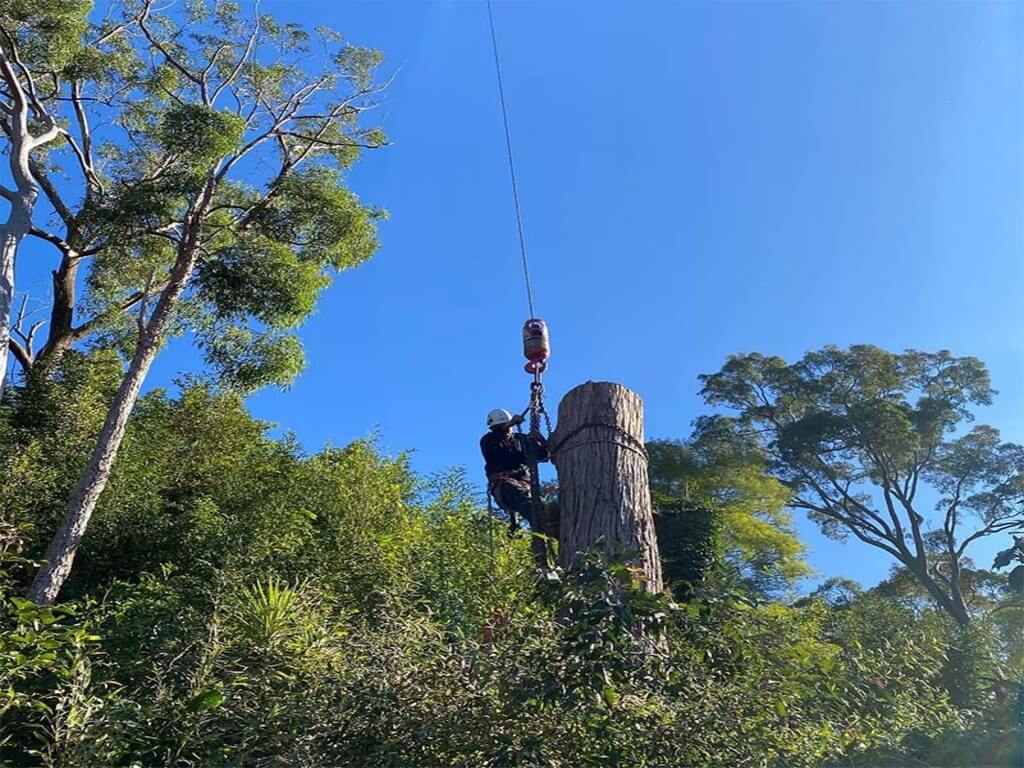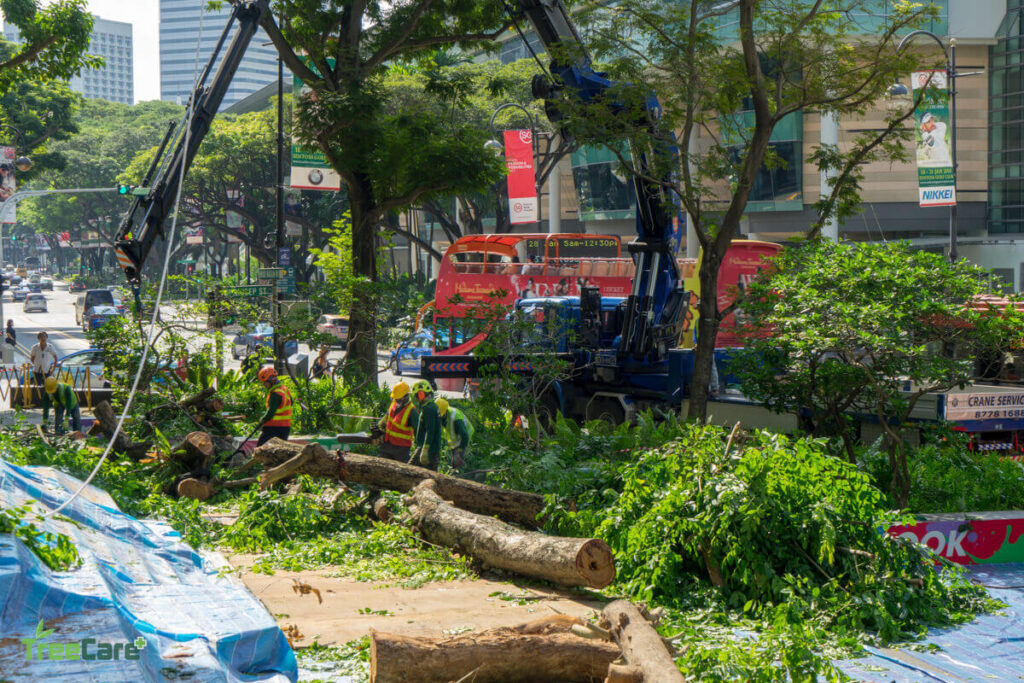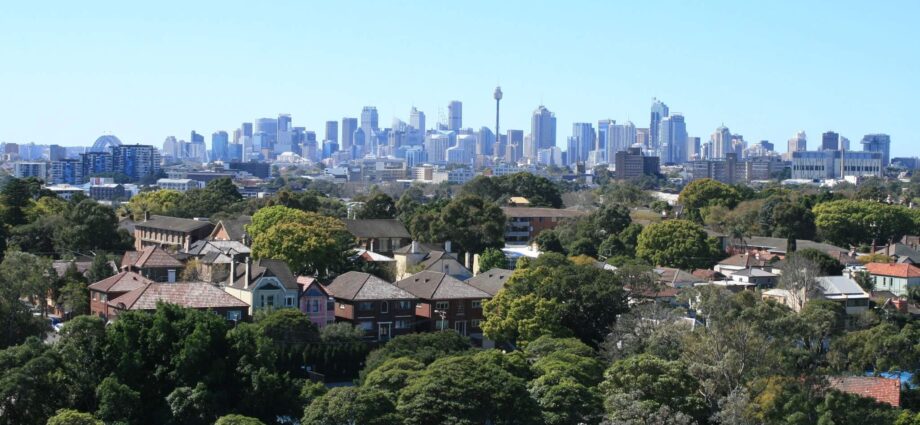In the era of rapid urbanization, preserving the balance between urban living and the beauty of greenery has become a pressing challenge. The Inner West, known for its blend of residential and commercial areas, faces a dilemma when it comes to tree removal. Understanding the need for tree removal and its impact on urban planning is essential for maintaining the delicate equilibrium between development and nature.
Understanding the Need for Tree Removal
The rapidly expanding urban landscape has significantly impacted green spaces in the Inner West. As buildings rise and concrete dominates the scenery, the importance of trees cannot be overstated. They provide shade, absorb harmful pollutants, and contribute to the overall aesthetic appeal of the area. However, certain situations necessitate tree removal inner west to ensure safety and accommodate progress.
The Impact of Urbanization on Green Spaces
The relentless march of urbanization has resulted in the shrinking of green spaces in the Inner West. As buildings multiply, the area available for trees to flourish diminishes. This reduction drastically alters the local ecosystem, affecting both flora and fauna. Additionally, less greenery leads to increased air pollution, loss of biodiversity, and a rise in urban heat island effect.
With the decrease in green spaces, the Inner West has experienced a decline in the number of trees. This has had a significant impact on the local environment. Trees play a crucial role in maintaining the balance of nature by absorbing carbon dioxide and releasing oxygen through photosynthesis. They also act as natural air filters, trapping pollutants and improving air quality. Without an adequate number of trees, the Inner West is at risk of facing increased air pollution levels, which can have detrimental effects on the health of its residents. Learn more about the challenges and solutions for tree removal.

Furthermore, the loss of trees has led to a decline in biodiversity in the Inner West. Trees provide habitats for various species of birds, insects, and mammals. The reduction in green spaces means that these creatures are losing their homes and sources of food. This loss of biodiversity not only disrupts the natural balance but also affects the overall health of the ecosystem. The absence of certain species can have a cascading effect on other organisms, leading to a decline in the overall resilience and stability of the local environment.
The Role of Tree Removal in Urban Planning
Urban planning plays a crucial role in addressing the challenges posed by urbanization. Tree removal, although seemingly counterintuitive to greenery preservation, is sometimes necessary for the overall well-being of the community. Strategic tree removal ensures the safety of residents, prevents damage to infrastructure, and paves the way for sustainable development.
When trees grow too close to buildings or power lines, they pose a significant risk to the safety of residents. Falling branches or uprooted trees can cause severe damage to property and even endanger lives. In such cases, tree removal becomes essential to eliminate the potential hazards and ensure the well-being of the community.
Additionally, trees with extensive root systems can cause damage to infrastructure such as sidewalks, roads, and underground utilities. The roots can crack pavements, leading to costly repairs and potential accidents. By strategically removing trees that pose a threat to infrastructure, urban planning can prevent these issues and maintain the functionality of the built environment.
Furthermore, tree removal can be a necessary step in facilitating sustainable development. As cities strive to become more environmentally friendly, urban planning must consider the integration of green spaces and the implementation of sustainable practices. In some cases, removing certain trees may be required to create space for the construction of energy-efficient buildings, installation of renewable energy systems, or the development of public transportation networks. By carefully considering the long-term benefits and impacts, urban planning can ensure that tree removal is done in a manner that promotes sustainability and enhances the overall quality of life in the Inner West.
The Process of Tree Removal in the Inner West
Tree removal demands a meticulous approach to guarantee the least disruption to the environment. Identifying trees for removal is the first step in this process.
When it comes to tree removal in the Inner West, experts in the field understand the importance of careful assessment. They meticulously assess the health, structural integrity, and location of each tree to determine if removal is necessary. This process involves considering factors such as disease, pest infestation, proximity to buildings, and potential hazards during extreme weather events.
Tree experts have a keen eye for identifying signs of disease or infestation. They look for visual cues such as wilting leaves, discoloration, or unusual growth patterns. Additionally, they inspect the tree’s trunk and branches for any signs of decay, cracks, or weak points that could pose a risk to nearby structures or pedestrians.
Furthermore, the location of the tree plays a crucial role in the decision-making process. Trees that are too close to buildings or power lines may need to be removed to prevent potential damage during storms or high winds. By carefully evaluating all these factors, arborists can make informed decisions about which trees should be removed.

The Technical Aspects of Tree Removal
Once a tree is marked for removal, highly skilled arborists utilize specialized equipment and techniques to safely complete the task. This ensures not only the safety of the workers but also minimizes the impact on the surrounding environment.
Tree climbing is one of the techniques used by arborists to access the tree safely. They are trained to climb trees using ropes, harnesses, and other safety equipment. This allows them to reach even the tallest trees with precision and care.
Controlled dismantling is another critical aspect of tree removal. Arborists carefully plan the process to ensure that the tree is taken down in sections, avoiding any damage to nearby structures or landscapes. This technique involves making strategic cuts and using ropes to guide the tree’s descent, ensuring a controlled and safe removal.
Once the tree is safely removed, the arborists focus on the careful disposal of the debris. They understand the importance of proper waste management and follow local regulations for recycling or disposing of the tree parts. This may involve chipping the branches and trunk into mulch or transporting the larger sections to a designated disposal site.
Throughout the entire tree removal process, arborists adhere to strict safety protocols. They wear protective gear, use safety equipment, and follow industry standards to minimize the risk of accidents or injuries. By prioritizing safety and employing their expertise, arborists ensure that tree removal is carried out efficiently and with the least possible impact on the environment.
Balancing Urban Living with Greenery
While tree removal is sometimes unavoidable, it is essential to strike a balance between urban living and greenery. Various strategies can be employed to achieve this harmonious coexistence.
As cities continue to expand and urbanization becomes more prevalent, the need to maintain green spaces becomes increasingly important. Urban planners must prioritize the preservation and rejuvenation of these areas to ensure a sustainable and livable environment for residents.
Strategies for Maintaining Green Spaces
One effective strategy in increasing the overall green cover is through the planting of new trees. By strategically selecting tree species that are well-suited to urban environments, cities can enhance their greenery while minimizing potential conflicts with infrastructure.
In addition to tree planting, implementing rooftop gardens has gained popularity in recent years. These green spaces not only provide aesthetic appeal but also help to regulate temperature, reduce energy consumption, and improve air quality in urban areas.
Creating pocket parks is another strategy that urban planners can employ to maintain green spaces. These small, accessible parks provide a respite from the hustle and bustle of city life, offering a place for relaxation, recreation, and social interaction.
Furthermore, implementing tree preservation ordinances can help protect existing trees from unnecessary removal. These regulations ensure that developers and construction projects take into account the value of urban greenery and make efforts to preserve it whenever possible.
Encouraging community participation in tree planting initiatives is another effective way to maintain urban greenery. By involving residents in the process, cities can foster a sense of ownership and pride in their green spaces, leading to increased care and preservation.

The Benefits of Urban Greenery
Urban green spaces provide numerous benefits to both residents and the environment. Trees, in particular, play a crucial role in mitigating air and noise pollution. Through the process of photosynthesis, trees absorb carbon dioxide and release oxygen, improving air quality and reducing the impact of greenhouse gases.
Additionally, trees act as natural sound barriers, absorbing and deflecting noise, thereby reducing noise pollution in urban areas. This is especially important in densely populated cities where noise from traffic and other sources can be overwhelming.
Furthermore, urban greenery helps to regulate temperature in cities. Trees provide shade, reducing the amount of heat absorbed by buildings and pavement. This, in turn, helps to mitigate the urban heat island effect, where cities experience higher temperatures than surrounding rural areas.
Aside from the environmental benefits, urban green spaces also have a positive impact on mental well-being. Studies have shown that spending time in nature, even in urban settings, can reduce stress levels, improve mood, and enhance overall mental health.
Moreover, urban green spaces serve as habitats for urban wildlife, providing shelter, food, and breeding grounds for various species. By preserving and expanding these green areas, cities can support biodiversity and create a more balanced ecosystem within the urban landscape.
Lastly, the presence of greenery in cities contributes to the overall visual appeal of the urban landscape. Trees, gardens, and parks add a touch of natural beauty amidst the concrete jungle, creating a more pleasant and inviting environment for residents and visitors alike.
The Future of Urban Living and Greenery
As we progress into the future, innovative solutions are emerging to deal with the challenges of urban living and greenery preservation in the Inner West.
Innovations in Urban Tree Management
The field of urban tree management is witnessing rapid advancements to address the need for sustainability and greenery preservation. Technologies such as tree root mapping, automated tree monitoring systems, and vertical tree installations are revolutionizing the way trees are managed in urban areas. These innovative approaches can help mitigate the need for extensive tree removal.
The Role of Community in Preserving Green Spaces
The preservation of green spaces requires collective effort and community involvement. Engaging residents in tree planting programs, organizing gardening workshops, and raising awareness about the importance of urban greenery can foster a sense of responsibility towards the environment. Encouraging communities to actively participate in preserving green spaces will contribute to their long-term sustainability.
In conclusion, balancing urban living and greenery in the Inner West necessitates a careful approach that considers the need for tree removal while preserving the natural beauty and ecological benefits of green spaces. By incorporating strategic tree removal, implementing sustainable urban planning, and encouraging community involvement, we can strive toward a future where urban development thrives alongside thriving greenery.

